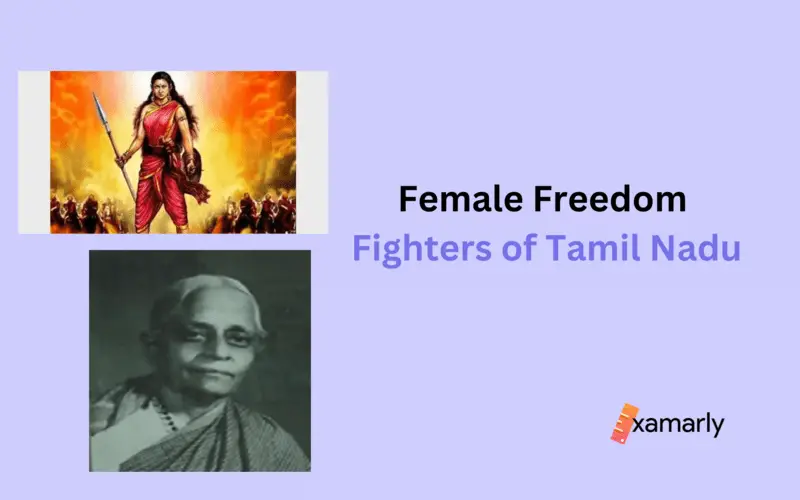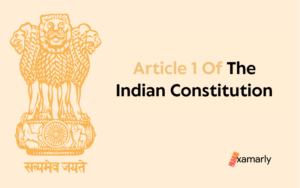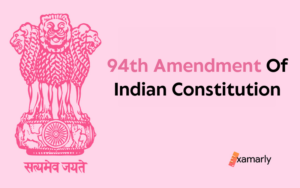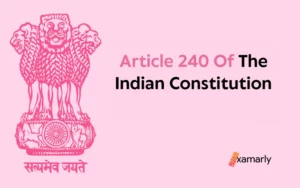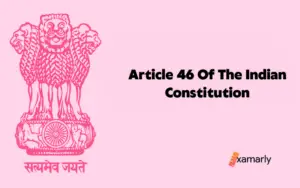The Indian independence movement is replete with acts of heroic yet ordinary women who dedicated efforts and their lives for the betterment of the country.
Each region within India is bestowed with tales of brave women, like in the case of Tamil Nadu. Numerous women of Tamil Nadu fought for liberation, including Anjalayammal, Ambujathammal, and Lakshmi Swaminathan, who led the female branch of the Indian National Army under Nethaji.
Yet, we are unaware of who they were and what they did for the country. As responsible citizens of this country, it is upon us to read and learn about these Tamil women’s freedom fighters. In the stories of their courage, we must find inspiration.
Female Freedom Fighters Of Tamilnadu
Rani Velu Nachiyar
Rani Velu Nachiyar was the first female freedom fighter who fought for the independence of our country. She is known by the name Veeramangai which means “brave woman” in Tamil.
She was the capable queen of Sivaganga. She went on to become the first queen to raise a fight against the British EIC.
The only child of King Chellamuthu Vijayaragunatha Sethupathy and Queen Sakandhimuthathal of the Ramnad Kingdom, Velu Nachiyar was the princess of Ramanathapuram.
Nachiyar received training in a variety of fighting techniques, including the use of war match weapons, martial arts like Silambam and Valari, horseback riding, and archery.
She was fluent in numerous languages, including French, English, and Urdu, and was a multilingual scholar.
She got married to the king of Sivaganga, Muthu Vaduganatha Periyavudaya Thevar. They had a daughter together.
Unfortunately, he was killed in 1780 at the hands of certain soldiers of EIC. This brought Rani Velu Nachiyar to war with the British.
Haider Ali, the Sultan of Mysore, provided her with 400 pounds of monthly income and 5000 men and women to help fight against the British.
After forming an army, Velu Nachiyar began to plot a suicide attack against the British. She poured ghee onto her head, resulting in a huge explosion of British ammunition.
She was an exceptional leader. She waited eight years before launching an attack against Nawab’s forces who at that time had already changed the name of Sivaganga to Hussain Nagar.
Her attack was so successful that it may have inspired the idea of suicide bombing. Her army commander, Kuyili, a man of nerve, and selflessness were responsible for a humiliating defeat for the British. She died in 1796 and was succeeded by her daughter named Velacci (or Vellachi Nachiyar).
Rukmini Lakshmipathi
Rukmini Laxmipathi was an Indian National Congress (INC) politician and independence protester. She was the first woman elected to the Madras Legislature and the Madras Presidency’s first minister.
Born on 6 December 1892, Rukmini Lakshmipathyi was part of an agriculturalist family. Her grandfather Raja T. Ramarao was a landlord.
After her degree education from Women’s Christina College, she went on to marry Dr Achanta Lakshmipathi.
Her earliest political acts were as a member of the Swadeshi Movement in the early 1920s, when she began spinning.
In 1923, she joined the Indian National Congress and helped organize the Congress Youth League.
She joined the civil disobedience movement in 1930 and was a key figure in Rajagopalchari’s Vedaranyam Salt Satyagraha in Tamil Nadu.
When Rajaji was arrested, she took over the direction of the Satyagraha. She was extremely skilled at coordinating ladies.
She was further imprisoned for a year for her involvement in the Vedaranyam Satyagraha and was the first female to be imprisoned for her involvement in Salt Satyagraha.
Rukmini Lakshmipathi’s legacy lives on through her family and her descendants. Rukmini Lakshmipathi road (previously called Marshall’s Road) is a road in Egmore named after this freedom fighter and activist.
In her honour, the Indian government released a postage stamp in 1997.
S. Ambujamma
Ambujammal Desikachari Srinivasa Iyengar was a proponent of both women’s rights and the Indian independence movement.
She was an ardent supporter of Gandhi and the principles he stood for. She took part in the Civil Disobedience Movement and later presided over the Tamil Nadu Congress Committee as Vice President. In 1964, Ambujammal was honoured with the Padma Shri award.
Ambujammal was born to S. Srinivasa Iyengar and his wife Ranganayaki on 8 January 1899. Srinivasa Iyengar was the President of the Swaraj Party and one of the most important members of the Indian National Congress in the Madras Presidency. In 1910, S. Desikachari, a lawyer from Kumbakonam, wed Ambujammal.
She was captivated by Mahatma Gandhi’s concepts at a very young age, particularly his beneficial socio-economic agenda.
Ambujammal was a certified teacher who worked part-time at the girls’ school Sarada Vidyalaya. From 1929 until 1936, she served on the Sarada Ladies’ Union committee.
She was chosen to serve as Madras’ Women’s Swadeshi League’s Treasurer in 1929. Gandhi’s social and economic policies were carried out through this League which was a non-political arm of the Congress.
During the time of the Independence Movement, Ambujammal participated in the Non-Cooperation Movement.
She refused to wear foreign clothes or goods and was arrested twice. She dedicated her life to the cause of freedom for India and influenced many women to do the same.
She also set up the Srinivasa Gandhi Nilayam in 1948, where she provided free medicine, kanji (gruel), and milk for the needy.
Ambujammal’s life has been characterized by a passion for social reform. The social worker established the Srinivasa Gandhi Nilayam in 1948 to provide free coaching to poor girls and to provide employment to women in the printing press.
She was a staunch advocate of the Village Self-Sufficiency Model as advocated by Bhave. In addition to his work as a social activist, Ambujammal was a prominent member of the Tamil Nadu Congress Committee and the chairman of the State Social Welfare Board.
Srinivasa Gandhi Nilayam, located in Alwarpet, Chennai, is the place where Gandhiji’s ashes are kept. It is located on Ambujammal Street.
The street is named after her as she was an ardent follower of Gandhiji. Her humble lifestyle and humble nature made her a popular icon of the Tamil people and have been celebrated as a hero by many.
S N Sundarambal of Tirupur
SN Sundarambal is one of the two freedom fighters who have a statue honouring them erected in Tirupur.
These two are known locally as ‘Kodi Kaatha’ Kumaran and ‘Tiruppur’ Sundarambal. SN Sundarambal is also known as the simple and humble freedom fighter who did not back down from the independence movement even when nursing her baby.
Born in Veerapandi, Tirupur on 7 October 1913, S.N. Sundarambal’s father Natchimuthu Goundar was a local leader and activist.
Although born to an affluent family, Sundarambal was very much interested in social service. Once during a meeting when Gandhiji asked people to donate to the freedom struggle party, Sundarambal without second thoughts donated her golden bangle.
It is then that Gandhi told her that merely her donation will not do. She has to step into the movement and adorn khadi.
She lived by Gandhiji’s words. Sundarambal took part in many protests throughout the struggle for freedom, including the Satyagraha protest in 1941 where she and her infant son were detained and imprisoned for three months in the Vellore Prison.
The next year, Mahatma Gandhi started the Quit India Movement in which she took part. She was once more detained and given another seven-month sentence at the Vellore Prison.
When Sundarambal organized a significant protest against the British administration in Tiruppur in 1943, she was once more detained and sentenced to three months in prison
She actively participated in guaranteeing the district’s farmers’ welfare after Independence and organized several rallies for this cause.
She was often arrested and imprisoned in the early 1970s as well. After meeting renowned social reformer Vinoba Bhave, she established the Angeripalayam orphanage in Tiruppur. She breathed her last on 20 August 2007.
Kamala Ramasamy
Kamala Ramasamy is mentioned as an independence fighter who became involved in the Communist movement in P Seenivasan’s two-volume Tamil work on Tamil communist warriors.
On June 9, 2019, Kamala Ramasamy, 93, passed away in Srirangam, close to Trichy. She had joined the Quit India campaign along with four other women.
For her support of the South Indian Railway movement, Kamala was sentenced to a year in prison in 1946. She spent that entire year practically behind bars.
She received another jail sentence in January 1947 as a result of the Indian Defense Act. She was the sole woman imprisoned in India, according to the text from the book.
Along with being pregnant, this caused a nationwide uproar and compelled the government to release her in April.
Her husband Ramasamy, who was also heavily involved in the Communist cause, was imprisoned at Vellore at the same time.
Relatable Article: Famous Slogans Of Female Freedom Fighters
Govindammal
Govindammal, a resident of Ampur in the Vellore district, joined the Subhash Chandra Bose-founded Indian National Army to fight for freedom.
Munisamy’s daughter Govindhammal was born in Ampur in 1926. Her husband, Arunachalam, worked as a clerk on a rubber estate nearby.
In 1943, the year the Jhanshirani regiment for women was founded, she enlisted in the military.
100 of the 1000 women in the force was chosen, and they underwent extensive gun-firing instruction. Govindammal received marksmanship training after being chosen as one of the 100.
Additionally, Govindammal gave an acre of a rubber plantation that she received as a wedding gift from her mother’s home to INA.
Lakshmi Sahgal
Captain Lakshmi Sahgal was a freedom fighter and close aide of Netaji Subhas Chandra Bose. Born on 24 October 1914 in Madras, India, she was the daughter of lawyer S. Swaminathan and social worker, Ammu Swaminathan. She is Mrinalini Sarabhai’s older sister.
Lakshmi attended Queen Mary’s College to study medicine and subsequently decided to pursue a career in it after earning an MBBS from Madras Medical College in 1938.
She graduated in gynaecology and obstetrics a year later. She practised medicine in Chennai’s Triplicane Government Kasturba Gandhi Hospital.
She fled for Singapore in 1940 when her marriage to the pilot P.K.N. Rao fell apart. She met several members of Subhas Chandra Bose’s Indian National Army while she was in Singapore.
Lakshmi requested a meeting with Bose after learning that he wanted to enlist women in the organization and left with the order to form a women’s regiment that would be known as the Rani of the Jhansi regiment.
Dr Lakshmi Swaminathan was renamed Captain Lakshmi and received a warm reception from women who wanted to join the all-female brigade. This name and identity would stick with her for the rest of her life.
In December 1944, the INA marched to Burma with the Japanese army, but by March 1945, the war’s tide had turned against them.
The INA leadership decided to retreat before Imphal was taken and she was captured by British soldiers. After being captured by the British, she spent a few months under house arrest in Burma and returned to India in 1946.
Her trials in Delhi increased the popular hatred of colonial rule. Lakshmi Sahgal’s life story is fascinating. She became a recipient of the Padma Vibhushan in 1998 which was awarded by president K, Narayan.
The Unsung Women Freedom Fighters Of Tamil Nadu
To fight for independence, women from many South Indian communities and areas served in the Indian National Army.
For instance, although coming from quite diverse backgrounds, Govindammal from Salem, P. Devaki from North Arcot, and Velayammal from Vyasarpadi all served as sepoys in the Rani Lakshmi Bai of the Jhansi army.
Another unsung lady is Sornathammal, who was born in Madurai. In 1943, she and Lakshmi Bai Ammal organized a women’s march with the motto “leave India.” Police battered and ridiculed the women after arresting them.
They were abandoned only after midnight at Alagarkoil. Dr Lakshmi Swaminathan (commandant of Rani Lakshmibai’s regiment), S. Manjubashini, Kannavaram Ammaiyar, Vijayalakshmi, and Sakuntala were some notable women from the South who participated in the struggle for freedom.
Conclusion
In accordance with the book “Kongu naattil Indhiya sudhandhira porattam,” there were approximately 21 women involved in the freedom struggle in the Coimbatore region alone, as per C. S. Ramakrishnan of the Mahatma Gandhi Study Center. Despite what the count is, the efforts of these women are immeasurable and they deserve a very high position in our historical narratives as well as public memory.
Who is the first female freedom fighter in Tamil Nadu?
Ambujammal Desikachari née Srinivasa Iyengar (1899-1983) was an Indian independence activist and women’s rights activist. A Gandhian, she participated in the Civil Disobedience Movement and served as Vice-President of the Tamil Nadu Congress Committee. Ambujammal was awarded the Padma Shri in 1964.
Who are the freedom fighters from Tamil Nadu?
Rangaiah Naidu, G. Subramania Iyer, Sir S. Subramania Iyer, C. Jambulingam Mudaliar, Salem Ramaswami Mudaliar, S.
Who is the Iron Lady of TN?
Jayaram Jayalalithaa (24 February 1948 – 5 December 2016) was an Indian politician and actress who served as Chief Minister of Tamil Nadu for more than fourteen years over six terms between 1991 and 2016.
Who is the first lady of Tamil Nadu?
Muthulakshmi Reddy (also spelled Reddi in some British Indian sources; 30 July 1886 – 22 July 1968) was an Indian medical practitioner, social reformer and Padma Bhushan award recipient. Muthulakshmi Reddy was appointed to the Madras Legislative Council in 1926.


